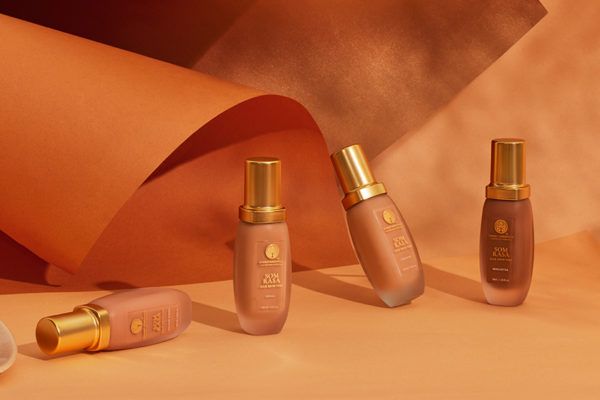Sunscreen is non-negotiable when it comes to protecting your skin from sun damage, premature ageing, and even skin cancer. But with so many options available, the decision between mineral sunscreen and chemical sunscreen can feel a bit overwhelming. Each type of sunscreen has its unique benefits, but understanding their differences is key to choosing the one that works best for your skin type and lifestyle.
Let’s dive deeper into the physical vs chemical sunscreen debate and explore which might be better suited to your needs.
What is Mineral Sunscreen?

Mineral sunscreen, often referred to as physical sunscreen, protects your skin by acting as a shield that reflects UV rays away. The two main ingredients in mineral sunscreens are zinc oxide and titanium dioxide. These minerals sit on top of the skin and create a physical barrier that scatters harmful UVA and UVB rays.
The fact that mineral sunscreens work immediately upon application makes them especially convenient when you’re in a rush or unexpectedly exposed to the sun. This also makes mineral sunscreens a great option for children or those with sensitive or acne-prone skin, as they tend to be gentler and less likely to cause irritation.
Moreover, mineral sunscreens are known for their broad-spectrum protection. Both zinc oxide and titanium dioxide block a wide range of UV rays, meaning they offer solid protection from both UVA (the rays responsible for ageing) and UVB (the rays that cause burning) radiation.
However, one of the main downsides historically associated with mineral sunscreen is its thicker texture and potential for leaving a white cast, especially on darker skin tones. Thankfully, modern formulations have improved significantly. Today’s products are often much more lightweight and blend easily into the skin, making them a viable option for all skin tones.
What is Chemical Sunscreen?

Chemical sunscreens work quite differently. Instead of forming a physical barrier, chemical sunscreens absorb UV rays. Once absorbed, these UV rays are converted into heat and then released from the skin. The active ingredients in chemical sunscreens, such as oxybenzone, avobenzone, and octinoxate, penetrate the skin to create this protective shield.
Chemical sunscreens are often praised for their lightweight, sheer texture, which makes them easy to apply and ideal for layering under makeup. They typically don’t leave any residue or white cast, which is a big advantage for people with darker skin tones who may find mineral sunscreens more challenging to blend.
That said, chemical sunscreens can sometimes be irritating to sensitive skin types. Some of the ingredients in these formulas have been known to cause stinging or redness, particularly around the eyes or on areas with existing skin conditions like eczema. In addition, since chemical sunscreens need to be absorbed by the skin to work effectively, they require about 15-20 minutes after application to fully activate, unlike mineral sunscreens, which provide instant protection.
Physical Sunscreen vs. Chemical Sunscreen: Key Differences

The core difference between physical and chemical sunscreen lies in how they protect your skin from UV radiation. But there are several other factors to consider when deciding which is best for you:
1. Protection Mechanism
- Mineral sunscreen (physical sunscreen) acts as a barrier, reflecting UV rays away from the skin’s surface.
- Chemical sunscreen absorbs UV rays, converts them into heat, and releases them from the skin.
2. Effectiveness Time
- Mineral sunscreen provides immediate protection as soon as it’s applied.
- Chemical sunscreen requires 15-20 minutes to become effective after application.
3. Suitability for Sensitive Skin
- Mineral sunscreen is generally better for sensitive or reactive skin types. Its ingredients are less likely to cause irritation and are especially beneficial for people with conditions like rosacea or acne.
- Chemical sunscreen may cause irritation, especially for people with sensitive skin. The chemicals used in these formulations can sometimes cause redness, itching, or stinging.
4. Reapplication
- Both types of sunscreen should be reapplied regularly (about every 2 hours), especially if you’re swimming or sweating. However, chemical sunscreens tend to break down more quickly under direct sunlight and may need more frequent reapplication.
5. Environmental Impact
- Mineral sunscreens are generally considered more environmentally friendly. Ingredients like zinc oxide and titanium dioxide are not linked to coral reef damage.
- Chemical sunscreens containing ingredients like oxybenzone and octinoxate have been shown to contribute to coral bleaching, which is why some regions have banned their use.
6. Texture and Finish
- Mineral sunscreens were traditionally thicker and left a white cast on the skin. However, newer formulations have made great strides in reducing this, offering lighter textures that blend more easily.
- Chemical sunscreens are generally more lightweight, absorbing quickly into the skin without leaving any residue or white film.
Which is Better for You?


When it comes to choosing between mineral and chemical sunscreen, it really depends on your skin type and what you’re looking for in a sun protection product.
If you have sensitive, acne-prone, or reactive skin, a mineral sunscreen is often the better choice. These sunscreens, also known as physical sunscreens, use zinc oxide or titanium dioxide to physically block and reflect harmful UV rays. Because they sit on the skin’s surface rather than being absorbed, mineral sunscreens are much gentler, making them perfect for those prone to irritation. They’re also ideal for anyone who prefers more natural ingredients and wants immediate protection after application.
On the other hand, if you have oily or combination skin, or if you prefer a weightless, invisible finish that layers well under makeup, chemical sunscreen may be more suited to your needs. These sunscreens absorb UV rays and convert them into heat, which is then released from the skin. Chemical sunscreens are often praised for their sheer, non-greasy texture, making them perfect for everyday wear, especially for those who don’t want to deal with the heavier feel of some mineral options. However, people with sensitive skin should be cautious, as chemical sunscreens can sometimes cause irritation.
Now, if you want the best of both worlds—the gentle protection of a mineral sunscreen with the lightweight, sheer finish of a chemical one—the Forest Essentials’ Sun Fluid SPF 50 | PA++ is a fantastic choice. This mineral sunscreen uses natural Zinc Oxide to provide powerful UVA/UVB protection, while ingredients like Coconut Water, Basil leaves, and Aloe Vera hydrate and soothe the skin. The best part? It’s lightweight and sheer, so you get all the benefits of a chemical sunscreen without the potential irritation, and it doesn’t leave a white cast. Free from chemicals and parabens, it’s perfect for daily use, offering up to 6 hours of sun protection with a smooth, non-greasy feel.
Conclusion
Both chemical and mineral sunscreens offer valuable protection from the sun’s harmful UV rays, but they work in very different ways. The choice between mineral vs. chemical sunscreen largely depends on your skin type, concerns about irritation, and how comfortable you are with the formulation. Whichever you choose, consistency is key. Sunscreen should be a daily essential, not just a beach-day afterthought. The best sunscreen is the one you’ll use regularly, so pick the one that fits seamlessly into your routine and keeps your skin protected.
FAQs
Which is more effective, chemical or mineral sunscreen?
Both are effective when applied correctly. Mineral sunscreens provide immediate protection and are ideal for sensitive skin, while chemical sunscreens offer a lightweight, sheer finish and are better for daily wear under makeup.
Does mineral sunscreen last all day?
No, like chemical sunscreen, mineral sunscreen needs to be reapplied every two hours, especially after swimming or sweating, for continued protection.
How do I know if my sunscreen is mineral or chemical?
Check the active ingredients. Mineral sunscreens contain zinc oxide or titanium dioxide, while chemical sunscreens include ingredients like oxybenzone, avobenzone, or octocrylene.
How effective are chemical sunscreens?
Chemical sunscreens are highly effective at absorbing UV rays and preventing sunburn, but they must be applied 20 minutes before sun exposure and reapplied regularly.
References
https://health.clevelandclinic.org/mineral-vs-chemical-sunscreen
https://www.byrdie.com/natural-sunscreen-chemical-sunscreen
https://time.com/6976377/best-sunscreen-mineral-or-chemical















